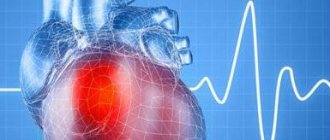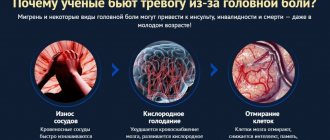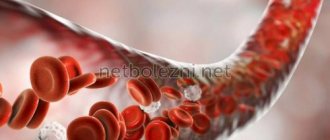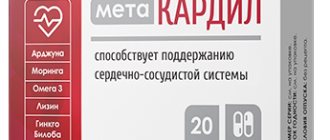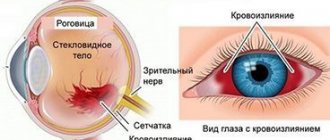- General data History
- Methods of use
- Physical signs
- First stage
- Signs
- Drug therapy
Attention!
Drug use causes irreparable harm to health and poses a danger to life!
Codeine is a medicinal substance that is included in many cough medications with an analgesic effect. It is an opium alkaloid, which has a weak narcotic effect, therefore it is often used by drug addicts to make drugs in a homemade way. The use of codeine for recreational purposes leads to the formation of drug addiction, poisoning of the body, overdose, which, if left untreated, leads to death.
Total information
Sleepy poppy is a source of codeine, which is obtained semi-synthetically from morphine. The substance is classified as an opiate. Its action resembles morphine, but has a less pronounced analgesic and narcotic effect. Codeine is actively used in pharmacology due to its ability to inhibit the cough center and reduce pain. The substance is included in tablets, cough syrups, and painkillers. In pharmacology, it is most often used in combination with ibuprofen or paracetamol.
In moderate dosages, it does not cause harm to the body, but with increasing doses, as well as uncontrolled use, codeine damages nerve endings and disrupts the functioning of the liver, kidneys, heart muscle and blood vessels.
Codeine gained its greatest popularity as a component of medications when desomorphine appeared on the drug market, where codeine became the main active ingredient with a narcotic effect.
Story
Codeine as a drug was synthesized in the early 19th century. In Russia, Bekhterev's cough medicine was made based on the opiate. Codeine preparations were also popular in other countries. However, drugs with opiates were used not only for medical purposes, but also for recreational purposes - they were added to alcoholic drinks. The high popularity, as well as the uncontrolled use of codeine and its combination with alcohol, caused many side effects, including drug addiction.
Later, drug addicts in makeshift conditions began to produce a dangerous drug based on codeine - desomorphine, which in the slang of drug addicts is better known as krokodil.
In 2012, Russia introduced a ban on the over-the-counter sale of drugs containing codeine.
Methods of use
The popularity of codeine is due to its low price, as well as the ability to purchase it at any pharmacy. The opiate has a weak narcotic effect, so it is rarely used in its pure form as part of medications. Most often, tablets and syrups are mixed with alcoholic drinks and then taken orally.
For a more pronounced narcotic effect, codeine-based drugs are prepared for intramuscular or intravenous administration. This method of use not only allows you to become intoxicated a few minutes after the infusion, but also causes addiction faster.
Pathological attraction to an opiate leads to a gradual decrease in its intoxicating effect, so drug addicts begin to produce a harder drug - desomorphine or begin to use other heavier substances.
With intravenous administration, dependence is formed within a month, and with the addition of chemical impurities after the first two or three doses. The consequences of opiate abuse include dysfunction of internal organs, blood clots, pulmonary edema, infection, and death.
List of psychostimulants
The group of psychostimulants contains a large number of drugs that differ in their effects on the body and the consequences of use.
Phenylalkylamines
Under the influence of drugs from the phenylalakylamine group, a person becomes active and can work for a long time without feeling tired. The absence of limits leads to complete exhaustion of the body.
Nootropics
This group has not yet been fully studied by scientists. The psychostimulant has a strong effect on the central nervous system. The main effect is the ability of nootropics to improve memory and increase mental activity of the brain. The drugs are prescribed for senile dementia or people with mental retardation.
Adaptogens
Adaptogens are able to weaken reactions to stressful situations and improve the body’s recovery processes. When using this group of stimulants, mental and physical performance increases.
Caffeine
Caffeine is one of the mildest psychostimulants. Used to feel invigorated, a person loses lethargy and weakness. Caffeine can slightly increase the level of performance and normalize concentration.
Cocaine
A natural stimulant made from coca leaves. Cocaine passes through the lungs into the bloodstream, then enters the brain. Cocaine provokes increased performance, decreased appetite and sleep disturbances. The drug quickly leads to persistent addiction, which can only be gotten rid of in a clinic.
TREATMENT OF COCAINE ADDICTION
Ecstasy
The stimulant drug causes frequent hallucinations, feelings of euphoria and happiness. The narcotic drug is often beyond the means of experienced drug addicts, so they switch to cheaper analogues such as heroin or amphetamine. Distributors sell the drug in the form of tablets of various colors.
Antidepressants
Medicines are intended to treat disorders of the nervous system. With the help of antidepressants, people's emotional background is normalized, memory and brain activity are improved. Addiction to such drugs gives a completely opposite effect.
Features of the effect on the body
The effect of codeine on the body is due to its influence on opiate receptors in the brain by stimulating the antinociceptive system. During metabolism, the substance is converted into morphine, which leads to inhibition of brain receptors, increased synthesis of adrenaline, dopamine, serotonin, which helps improve mood and general well-being.
Physical signs
After use, codeine anesthetizes, inhibits the cough and respiratory centers, and inhibits the activity of the digestive tract. However, when taken uncontrolled for a long time, codeine:
- disrupts metabolism;
- depresses cardiac and respiratory activity;
- causes arrhythmia, ischemic disease;
- reduces liver activity;
- slows down intestinal motility;
- interferes with urination;
- inhibits thermoregulation;
- reduces blood pressure, body temperature;
- provokes muscle rigidity;
- constricts the pupils.
Mental symptoms
By disrupting the transmission of nerve impulses, when abused, codeine causes:
- twilight clouding of consciousness;
- disorientation in space;
- memory loss;
- emotional instability - good mood, friendliness gives way to aggression, apathy;
- delusional thoughts;
- psychosis;
- persecution mania;
- panic attacks.
How addiction is formed
As the dosage increases, the frequency of use, and the combination of codeine with other narcotic substances and alcohol, a gradual increase in tolerance occurs. The body's protective properties weaken, and to obtain drug intoxication, an increase in dosage is required, and withdrawal syndrome occurs.
First stage
At the first stage, codeine addiction is characterized by the following symptoms:
- thoughts only about the drug;
- deterioration in sleep quality;
- fading of mental and physical signs of codeine intoxication;
- deterioration or complete loss of appetite;
- the appearance of irritability, skin itching.
Psychological discomfort, a depressed emotional state in the absence of the drug in the blood forces a person to take a new dose of codeine to restore the psycho-emotional state. At this stage, the opiate user does not recognize his addiction.
Second stage
At the second stage of the formation of addictive behavior, the frequency of administration and dose increases - tolerance increases. Mental signs of addiction are accompanied by physical symptoms. This stage is characterized by the appearance of a protective reaction to the administration of the drug - itching, nausea, vomiting. Some functions of the body are gradually restored, at the same time the narcotic effect is reduced, and intoxication becomes much shorter. The addict continues to deny his addiction.
The effect of morphine, a metabolite of codeine, on the nervous system is reduced, which leads the drug addict to the need to regularly increase the dose. When the drug is partially removed from the body, a person experiences physical impotence and emotional instability.
Third stage
The third and final stage of somatic dependence is when the mental and physical symptoms of addiction intensify, and codeine metabolites become part of the metabolism. The drug addict feels comfortable only during codeine intoxication. Opiate use is becoming more frequent and is often combined with alcoholic beverages or other psychoactive substances. Often, to enhance the narcotic effect, codeine is combined with toxic and chemical components.
At this stage, missing a dose is accompanied by a pronounced withdrawal syndrome, and the functions of the internal organs are depressed - multiple organ failure develops.
How long do codeine addicts live?
The life expectancy of codeine addicts depends on their general health, dosage, regularity of taking the opiate, as well as its combination with other psychoactive substances.
The average life expectancy of a codeine addict is 3-7 years, but most do not live more than 5 years. The cause of death most often is not dysfunction of internal organs, which is formed under the influence of the drug, but an overdose or secondary infection, against which sepsis develops.
Detoxification
3 000 ₽
Calling a narcologist to your home
3 000 ₽
Treatment prices:
| Service | Price, rub) |
| Types of therapies | |
| Standard detoxification therapy | 3 500 ₽ |
| Double Detox Therapy | 6 000 ₽ |
| Enhanced Detoxification Therapy | 7 500 ₽ |
| Maximum detoxification therapy | 9 500 ₽ |
| Quick sobering up at home | 7 500 ₽ |
| Hospital at home 1 day | 22 000 ₽ |
| Advanced hospitalization | 15 000 ₽ |
| Treatment in hospital | |
| Accommodation | |
| Economy chamber (6 beds) | 2 000 ₽ |
| Standard room (4 beds) | 3 000 ₽ |
| Increased comfort (2 seater) | 5 500 ₽ |
| VIP chamber (1 person) | 12 500 ₽ |
| Individual post 24/7 | 5 000 ₽ |
| Medical and social rehabilitation 21 days | 140 000 ₽ |
| Service | Price, rub) |
| Initial consultation with a narcologist | for free |
| Consultation with a psychologist | 3 000 ₽ |
| Psychiatrist consultation | 5 000 ₽ |
| Coding at home Torpedo | 7 500 ₽ |
| Express output and encoding (doublet) | 13 500 ₽ |
| Coding using the Dovzhenko method | 12 000 ₽ |
| Hypnosis classic session | 13 000 ₽ |
| Ericksonian hypnosis session (NLP) | 8 000 ₽ |
| Coding method Torpedo | 5 500 ₽ |
| Double block | 8 000 ₽ |
| Esperal injection for 1 year | 9 900 ₽ |
| Tetlong for 3 months | 10 500 ₽ |
| Esperal gel for 1 year | 15 000 ₽ |
| Selincro course of therapy | 12 500 ₽ |
| Implantation of Disulfiram for 1 year | 18 000 ₽ |
| Vivitrol injection for 1 month | 26 000 ₽ |
| Naltrexone stitching for 3 months | 35 000 ₽ |
| Neuroimplantation Prodetoxon for 6 months | 47 500 ₽ |
| Narcopsychotherapy session | 50 000 ₽ |
| Neutralization of encoding | specify |
| Psychodiagnostics / pathological diagnostics | 7 500 ₽ |
| Psychotherapy session | 5 000 ₽ |
| Family psychotherapy | 6 000 ₽ |
| Outpatient rehabilitation in Moscow | 33 000 ₽ |
Expand
We will select an individual treatment plan
Free consultation 8-800-200-27-23
Consequences
Chronic codeine abuse does not go away without leaving a trace. Even with timely diagnosis and proper treatment, the drug disrupts the functioning of internal organs and provokes diseases that are difficult to correct. Long-term use of opiates leads to the development of the following disorders:
- allergies with swelling, redness of the face, nausea, vomiting, less often Quincke's edema;
- depression of the cardiovascular system, decreased heart rate, surges in blood pressure;
- acute heart failure;
- pathologies of the digestive tract, intestinal obstruction;
- muscle rigidity, tremor;
- respiratory failure;
- decreased libido, potency, reproductive dysfunction;
- exacerbation of existing chronic diseases;
- renal and liver failure;
- formation of trophic ulcers at the injection site;
- secondary infection, sepsis;
- formation of schizophrenia-like states;
- hallucinations, persecution mania;
- toxic encephalopathy.
Signs of psychostimulant use
With regular use of psychostimulant drugs, a person’s behavior and appearance begin to change, and the functioning of internal organs is also disrupted. It is necessary to highlight the main signs that indicate drug addiction:
- The pupils are dilated or, on the contrary, narrow, and do not respond to light.
- The skin takes on a pale appearance and becomes dry.
- Dry mouth, sores appear.
- A person does not take care of his appearance and becomes unkempt.
- Weight loss due to loss of appetite.
- Sleep is disturbed.
Also, drug addicts become indifferent to their usual activities and lose interest in what is happening around them. Their circle of friends changes, injection marks appear on their arms or legs.
MOTIVATION OF A DEPENDENT FOR TREATMENT
Signs of a drug addict
At the first stage of addiction formation, it is extremely difficult to recognize the problem, since no serious changes occur in the body of a novice drug addict. An alarming signal can be codeine withdrawal, which relatives of the drug addict confuse with alcohol withdrawal, so the problem often remains unsolved and continues to grow.
Relatives and friends of the addict begin to sound the alarm when the signs of drug intoxication become more pronounced, and drug withdrawal is accompanied by more pronounced symptoms. You can recognize a codeine addict while intoxicated by the following signs:
- a good mood;
- calm;
- loss of orientation in space and time;
- constriction of the pupils;
- slowing of respiratory and cardiac function;
- drowsiness, which increases as the drug is removed from the body.
After a drug addict awakens from a troubled sleep, withdrawal occurs, which is accompanied by symptoms of varying severity.
Signs of drug intoxication: what will happen
Drug poisoning can be immediately identified by a number of symptoms, and measures can be taken. A person’s behavior changes, their general health deteriorates, they may lose consciousness and fall into a coma. At this time, it is important to quickly provide qualified medical support.
Behavior of a drug addict during an overdose
Poisoning of the body is expressed in a change in human behavior. He becomes inhibited and ceases to control himself. Anxiety and panic can trigger outbursts of anger and aggression. In this state, a person experiences suicidal thoughts and can harm himself and loved ones. Poisoning with drugs can lead to loss of consciousness, during which there is a high probability of falling into a coma.
Withdrawal syndrome
Treatment of codeine addiction is not only dangerous for the health and life of the drug addict, but is also fraught with constant breakdowns, as it is complicated by withdrawal syndrome, which is better known as “withdrawal.” The severity of the clinical picture of withdrawal syndrome depends on the length of drug addiction. When mental and physical dependence is formed (the second and third stages of dependence), “withdrawal” lasts from two weeks to a month and is accompanied by pronounced symptoms:
- aches in muscles and joints;
- convulsions;
- psychosis;
- increased irritability;
- causeless, uncontrollable aggression;
- lacrimation;
- sneezing;
- nausea, vomiting, diarrhea;
- increased body temperature, blood pressure;
- increased heart rate;
- sweating, chills;
- insomnia;
- weakness;
- exhaustion, anorexia;
- dry, pale skin.
During the period of abstinence, a drug addict is capable of doing anything for the sake of a new dose.
However, it is quite difficult to recognize a codeine addict by external signs, so testing is required to establish the fact of substance abuse.
Poisoning with psychostimulants: dangers of use
Psychostimulant drugs affect the cells of the nervous system, so the mental state of drug addicts changes. When poisoning occurs, the body experiences severe stress and destructive processes occur. If medical attention is not provided, an overdose can lead to death.
REMOVAL AT HOME
Hyperthermia during intoxication
In case of an overdose of stimulant drugs, an increase in body temperature is observed. Hyperthermia during intoxication can lead to the development of renal failure, hypotension, neurological consequences and death.
Signs of overdose
Poisoning with psychostimulants is accompanied by the following symptoms:
- The appearance of an anxious state.
- Limb spasms, tremors.
- Malfunctions of the heart.
- Strong headache.
- Fainting state.
Intoxication with psychotropics has a strong negative effect on the brain and heart function. An overdose often leads to a heart attack, and irreversible changes occur in the brain.
How long does it stay in the body?
Codeine is quickly metabolized into morphine, but the narcotic effect occurs only an hour after administration. 60 minutes after consumption, its breakdown products can be detected in the blood, and after 2-5 hours the metabolites are already found in the urine.
The rate of codeine metabolism depends on the dosage of the drug, the length of drug addiction, combination with other drugs, body weight, metabolic characteristics, and general health. Thus, in the blood after a single dose of an opiate, traces of it can be detected within 12 hours, and with regular use from 48 to 72 hours, less often with dysfunction of the excretory system, traces of metabolites can be detected for up to 7 days.
Morphine is the main breakdown product of codeine, which is excreted from the body in the urine by the kidneys, so its breakdown products can be found in this biological fluid for up to three days with a single dose of a psychotropic substance and up to 10 days with a chronic form of drug addiction.
Codeine stays in the hair for six months or more until the hair is completely renewed. This is due to their ability to accumulate all the substances that a person has used throughout his life.
Consequences of drug overdose: what happens after
If a drug addict was saved from poisoning with psychotropic substances, the consequences will still be negative. Often, after severe poisoning, a person develops nervous diseases, chronic diseases worsen, taking on incurable forms, including oncology. Often, drug addicts who have retained some sanity, after an overdose, decide to get rid of their addiction forever. Then they go to a drug treatment clinic for treatment and rehabilitation. This takes quite a long period, but the positive result is worth it.
Methods for determining codeine in the body
There is no specific test for determining codeine in the body, so analyzers aimed at detecting morphine are used for research.
At home, as well as in laboratories, test strips are used as a preliminary study, the work of which is based on immunochemical analysis. The most informative are the following rapid tests:
- ImmunoChrome-Morphine-Express, Narcochek for the determination of morphine in urine;
- Vivacek to detect metabolites in the blood.
If the result is positive, the biological material is sent for further research in the laboratory. To obtain more detailed information about the dosage of the substance and the duration of drug addiction, a chemical-toxicological analysis is prescribed.
Blood, urine and hair are used for laboratory testing. At the same time, hair analysis is the most informative, as it allows not only to confirm the fact of drug abuse, but also to determine the length of drug addiction and the dosage of the substance.
Death from drug overdose: signs
Severe drug addiction and frequent overdoses always lead to early death. With systematic drug use, toxins accumulate in the human body, which have a detrimental effect on all organs. Very often, an overdose causes cardiac arrest. An important organ cannot cope with a huge dose of poison. If resuscitation is not taken in time, the person will die. Also, the death of a drug addict can occur from a lack of oxygen, which causes suffocation.
Codeine overdose
Codeine overdose is one of the causes of death. Occurs against the background of poisoning as a result of chronic drug abuse or a combination of an opiate with other psychoactive substances, alcohol or potent drugs.
120 mg of codeine taken over the course of a day is considered fatal. And when an opiate is combined with other drugs or alcohol, a smaller dosage can be fatal.
Signs
A codeine overdose can be recognized by the development and intensification of the following clinical picture:
- a sharp decrease in blood pressure;
- constriction of the pupils, lack of reaction to light;
- chills, decreased body temperature, cold sweat;
- clouding of consciousness;
- impaired coordination of movements, orientation in space;
- decreased heart rate;
- shallow breathing;
- convulsions;
- coma.
In the absence of medical assistance, respiratory and cardiac activity stops, kidney and liver failure increases, and death occurs.
Detoxification
When the first symptoms of an overdose appear, you must immediately call an ambulance and provide first aid to the victim, namely:
- lay on a flat surface, turning your head to the side to avoid blocking the airways with vomit;
- open the window, unbutton clothes that are restricting breathing;
- talk to the victim, make sure that he does not lose consciousness.
After the arrival of the emergency team, it is necessary to inform about the drug taken and its possible dosage. The victim is transported to the department of a drug treatment clinic, where detoxification is carried out in a hospital setting, which is aimed at:
- cleansing the body of toxins and metabolites using gastric lavage, as well as intravenous administration of an opioid receptor antagonist (Nalorphine or Naloxone), which reduce all the effects of morphine;
- restoration, maintenance of respiratory and cardiac activity, blood pressure.
All types of drug addiction
Drug addiction treatment
More details
Female, age, beer
Treatment of alcoholism
More details
Unintentional methadone overdose
Methadone has been used safely and effectively for decades to treat opiate addiction. In fact, the most common use of methadone is in the pharmacological treatment of drugs such as heroin, morphine, or opiate-based painkillers. But methadone can also be used as a pain reliever or abused by drug users to achieve euphoric feelings. In many countries, the number of methadone prescriptions to relieve pain during withdrawal of a drug addict has increased, and at the same time, the non-medical use of this drug for the purpose of obtaining “quick pleasure” has also increased.
According to some reports, methadone, used for substitution treatment for heroin addiction, does not appear to be the main problem in overdose. But one important element in the occurrence of methadone overdose is the fact that it is often used in the form of an inexpensive generic drug that is found in “legal” drugs.
This is why methadone overdose is usually associated with attempts to obtain high levels of the drug for abuse of this opiate. People who abuse other drugs such as heroin are turning to methadone due to its increasing availability. However, methadone does not produce the same euphoric "high" as other drugs, so they end up consuming dangerously high doses of methadone to achieve the desired effect. A common result of these cases is overdose.
Analogs
The closest analogue of codeine is desomorphine, which is produced in artisanal conditions with codeine preparations. Desomorphine is better known among drug addicts as krokodil. The drug also contains chemical and toxic components that make it the most toxic and aggressive psychotropic substance. Dependence on desomorphine develops after the second dose. Each new dosage leads to rapid destruction of cells of the nervous and immune systems. Desomorphine is used intravenously, and necrotic foci form at the injection site, which leads to the development of gangrene and sepsis. Desomorphine drug addicts live no more than one year.
Heroin is the second narcotic analogue that belongs to synthetic opiates. Heroin is taken intravenously, inhaled through the nose, or less often orally. The drug is a semi-synthetic opiate. Dependence on heroin is formed after the first injection, and chronic drug addiction becomes the cause of multiple organ failure and complete personality degradation.
Pharmacy analogues include opioid analgesics, which are similar in their pharmacological action to codeine, among them:
- Oxymorphone in a therapeutic dosage has an analgesic effect, but if it is exceeded, it causes narcotic intoxication, and if abused for a long time, psychophysical dependence. Oxymorphone can cause an overdose, which is accompanied by pulmonary edema, depression of respiratory and cardiac activity.
- Promedol is a drug that was originally used to reduce the toxic effects on the body. However, later its psychostimulant properties were noticed. Drug addicts began to use Promedol for recreational purposes and considered it a safe drug. Abuse of the drug has led to overdose and the development of side effects, including coma, convulsions, renal, cardiac and respiratory failure.
Types of psychostimulants
All drugs with psychostimulant effects are divided into two main groups: plant and synthetic origin. Synthetic substances cause particular harm to the body.
Psychomotor stimulants
Psychomotor substances can increase mental activity. When addiction develops, irreversible processes occur in a person, which end in complete degradation of the individual. Such drugs include:
- Caffeine.
- Sidnocarb.
- Meridil.
- Phenamine.
Psychomotor stimulants temporarily activate mental and physical activity. A person's need for rest decreases.
Find out treatment recommendations without leaving home for free
To select a treatment plan, you just need to leave a request, we will contact you to select the time and specialist you need
Submit your application
Natural psychostimulants
There is an impressive list of plants from which psychostimulant substances are extracted. They are used to produce medicines that can influence the human psyche and increase performance. Herbal stimulants grow in different parts of the world. Among the most famous and potent plants are:
- Aralia.
- Rhodiola.
- Ephedra.
- Eleutherococcus.
- Cola.
Synthetic psychostimulants
Synthetic drugs are manufactured artificially. These psychoactive substances cause persistent addiction and destroy the human nervous system and internal organs. The most famous psychostimulants include:
- Amphetamine and methamphetamine.
- Cocaine.
- Ecstasy.
- Ephedrine.
CNS stimulants
Central nervous system stimulants include substances that can increase a person’s endurance and eliminate the feeling of fatigue. With such drugs, people become more active and do not need sleep or rest. This group includes:
- Meridil.
- Methamphetamines and amphetamines.
- Mesocarb.
- Caffeine.
Medical stimulants
Medical psychostimulants are used to treat many diseases. Piracetam is prescribed to people after a stroke to restore speech and motor activity. Phenotropil, produced by Russian pharmacists, improves memory, gives a boost of vivacity and energy. The drug madofinil is intended to combat narcolepsy. Some medical stimulants are prohibited for use in Russia.
Is it possible to cleanse the body of drugs at home?
It is possible to cleanse the body of codeine and its metabolites at home only after consuming one dose of the drug; in case of chronic drug addiction, independent detoxification can provoke a worsening of the condition, the development of complications, even death. At home, you can resort to the following measures:
- Take sorbents (Smecta, Polysorb, Enterosgel) - drugs accelerate the removal of toxins and drug metabolites from the body, and also reduce the rate of absorption of codeine into the blood. The method is most effective when taking the substance orally.
- Drink plenty of fluids, namely clean water, natural juices, herbal teas, fruit drinks, and alkaline mineral waters. Drinking plenty of fluids helps accelerate the filtration function of the kidneys, which is necessary for the rapid evacuation of toxins, codeine metabolites and waste products.
- Exercise. Even minimal physical activity speeds up metabolism, improves general condition, stimulates the production of serotonin and dopamine, which help cope with a depressed psycho-emotional state.
Taking diuretics, choleretic, and other medications on your own is strictly contraindicated. Self-medication can cause irreversible complications.
Types of overdoses
The body reacts completely ambiguously to the effects of drugs of different origins and composition. With some overdoses a person becomes weak and weak-willed, with others - aggressive and uncontrollable. In case of poisoning, it is important to find out exactly what substance the person consumed. Detoxification of the body occurs with the use of drugs that are suitable only for a specific type of drug.
Opiate poisoning
When overdosing on opiate substances, the addict experiences:
- problems with respiratory function;
- the pupils of the eyes narrow;
- pulse slows down.
The skin takes on a pale or bluish tint. The person stops responding to sounds and other external stimuli.
Overdose of psychotropic drugs
If the dose of psychostimulant drugs is exceeded, then the following appears:
- Strong headache;
- the heart begins to beat rapidly;
- possible tremor of the arms and legs;
- increased sweating.
In serious cases, loss of consciousness occurs. Psychostimulants include cocaine, ecstasy and methamphetamine-type substances.
Salt overdose
Synthetic salts have a strong effect on the brain. Manufacturers of the drug often change its composition without adhering to a specific formula. It is quite difficult to determine the concentration of the active substance, which leads to overdoses.
Salt poisoning causes:
- dizziness;
- nausea;
- chills;
- in more severe cases, high temperature rises;
- chest pain appears;
- panic begins.
Amphetamine poisoning
When an amphetamine overdose occurs, a person sweats heavily, the temperature rises, and he cannot control his actions.
In case of severe poisoning, the following are clearly expressed:
- signs of stroke;
- dry mouth;
- nausea.
Skin rashes may develop. If symptoms of poisoning occur, the person should be immobilized and call a doctor or ambulance.
Hallucinogen poisoning
Drugs that have hallucinogenic properties can completely change a person’s mental state. An overdose threatens the appearance of persistent hallucinations and psychosis, which often lead to suicide.
MDPV overdose
With the maximum dose of MDPV, the consequences are very dire. First, the substance causes a state of psychosis, then it hits the cardiovascular system with a shock wave. The drug addict's blood pressure begins to fluctuate and his heart rhythms become erratic. Failure to provide assistance in a timely manner can lead to death.
Overdose of pills
Medicines that are used as sleeping pills, when used uncontrolled, cause severe addiction. With a small overdose, the symptoms are not too pronounced and may go away on their own. A person may experience weakness and lethargy. In case of serious poisoning, the pupils constrict and the patient may fall into a coma or die.
Spice poisoning
Spice is usually used as a smoking mixture. Persistent addiction to the drug occurs literally after just a few doses.
Spice overdose manifests itself:
- nausea;
- vomiting;
- dizziness;
- convulsions;
- loss of consciousness.
The main cause of poisoning is the poor quality of the product.
Overdose of speed
People who use speed quite often experience an overdose. When poisoning occurs, consciousness begins to become confused, convulsions appear, and body temperature rises. In severe cases of poisoning, the drug addict’s speech becomes slurred and heart failure occurs.
Heroin overdose
Heroin is considered the most dangerous drug. Overdose causes severe and often irreversible consequences. Breathing may slow down, leading to suffocation, and the brain stops working normally. Heroin poisoning often causes cardiac arrest. If symptoms of a heroin overdose appear, the addict should urgently call a doctor. The specialist will detoxify and cleanse the body of poison.
Overdose on grass
Marijuana or hemp are drugs of plant origin. However, to enhance the narcotic effect, the grass is often treated with dangerous chemicals.
In case of a cannabis overdose in a person:
- pupils dilate;
- the skin turns red;
- mucous membranes dry out.
The addict loses control of his movements and speech.
Treatment Methods for Codeine Addiction
It is safer to treat codeine addiction in a specialized drug treatment clinic. Constant monitoring, comprehensive medical care, and the ability to adjust the therapeutic plan if it is ineffective help speed up the healing process and also eliminate the occurrence of dangerous consequences.
Drug therapy
At the first stage of treatment, medication cleanses the body of toxins, waste products and codeine metabolites, and corrects any complications that arise. To do this, the patient is prescribed an intravenous infusion:
- solutions of glucose with vitamins and sodium hypochlorite;
- antidotes;
- sorbents.
Medicines help speed up metabolism and strengthen the immune system. After relief of the condition, sorbents, as well as vitamin and mineral complexes, are prescribed orally.
To correct complications arising from the use of a psychoactive substance, drugs are prescribed to lower blood pressure, normalize body temperature, sedatives and hypnotics, drugs to thin the blood and stimulate the filtration function of the kidneys, and medications to improve liver function.
Properly selected drug therapy helps cope with withdrawal symptoms, remove toxins from the body and serves as the first stage of drug addiction treatment.
Rehabilitation
After the “withdrawal” is relieved, drug treatment continues, and psychological rehabilitation is carried out along with it. This stage helps to cope with psychological cravings for codeine, find the meaning of life without the drug, and establish social contacts. To do this, psychotherapists and psychologists are involved in working with drug addicts, who, through conversation and special tests, determine the cause of psychotropic abuse and work with it. To eliminate addiction, doctors use the following techniques:
- psychoanalysis;
- individual and group trainings;
- art therapy;
- music therapy;
- Gestalt therapy;
- cognitive behavioral therapy;
- occupational therapy
An obligatory stage of rehabilitation is working with codependents - close people of the drug addict who are involved in addictive behavior. This stage of treatment is necessary, as it helps the patient’s relatives and friends cope with feelings of guilt, work through family relationships, and change their attitude towards the patient.
Coding for codeine addiction is an ineffective treatment method that has no evidence base.
The final stage of rehabilitation is resocialization, which is aimed at adapting to a new life without drugs, finding new hobbies, returning to family and society. Resocialization is the key to successful remission. At this final stage of the fight against addictive behavior, it is important to continue to attend group trainings with a psychologist.
Literature:
- Alcoholism, drug addiction and other mental and behavioral disorders associated with the use of psychoactive substances. Textbook / L.M. Bardenstein et al. - M.: GEOTAR-Media, 2015. - 96 p.
- Bolotovsky, I. S. Drug addiction. Substance abuse / I.S. Bolotovsky. - M.: Kazan University Publishing House, 2006. - 96 p.
- Medical, social and economic consequences of drug addiction and alcoholism / E.A. Koshkina and others - M.: PER SE, 2008. - 288 p.
- Miroshnichenko, L. D. Drugs and drug addiction. Encyclopedic Dictionary: monograph. / L.D. Miroshnichenko. - M.: PERO, 2014. - 404 p.
Article verified by an expert
Terekhova Anna Vladimirovna
psychologist-consultant on socio-psychological work with addicted clients and their families. More than 10 years of experience.
Similar articles:
How to quit lyrics?
Plasmapheresis
How long does it take for snus to leave the body?
The effect of opiates on the body
Methadone: composition, effect and consequences
One comment on “Psychostimulants: the danger of poisoning”
- X:
September 2, 2021 at 02:05
The main danger of drug poisoning is the inhibition of the central nervous system, which can be fatal. At the same time, an overdose is individual for each person and depends on a number of factors, primarily on the method of entry of the drug into the body. With intravenous injections, the drug instantly spreads throughout the body, causing the most severe intoxication. In people with chronic diseases, the first signs of drug poisoning occur in a complicated form. And the combination of several groups of narcotic drugs significantly complicates diagnosis and treatment.
Answer
Conclusion
Codeine is an opioid analgesic with psychostimulant properties. Serves as a starting material for the synthesis of other opioid analgesics with a more pronounced narcotic effect. Abuse of codeine-containing drugs causes a persistent psychophysiological craving, which leads to polydrug addiction, overdose, and secondary infection, which inevitably leads to death. To save the life of a drug addict, it is necessary to promptly recognize the signs of drug addiction, undergo examination and begin treatment. Complex therapy using medications, the help of psychologists, psychotherapists allows you to cope with addiction, minimizing the likelihood of relapse.
Treatment calculator
Field score:
Total score:
Patient age
Length of use
What he uses Has he previously undergone treatment Consent to treatment Concomitant diseases Employment
Waiting for values to be entered
Drug poisoning
The first symptoms of poisoning are always a deterioration in general health, weakness, and headaches. If these signs appear, you should immediately call a doctor. The more time is lost, the worse the consequences will be.
Intoxication of the body
Experienced drug addicts have all their organs and internal systems in poor condition, and develop diseases and pathologies. Intoxication leads to even more severe consequences. The effect of drugs can only be neutralized with the use of effective medications.
Drug coma
If a drug addict falls into a coma during an overdose, his nervous system stops working and breathing becomes impaired. The person seems to be sleeping, but it is impossible to wake him up; he does not react to any actions or sounds. If this condition is ignored, it may get worse.



